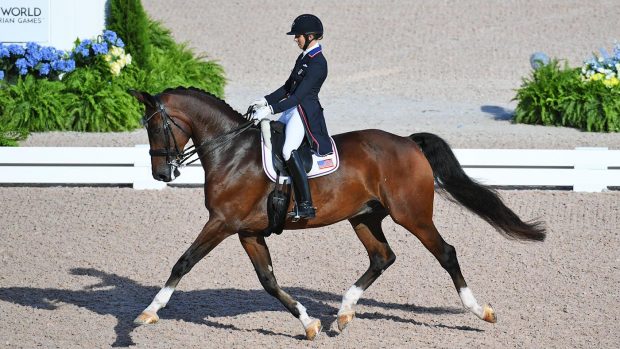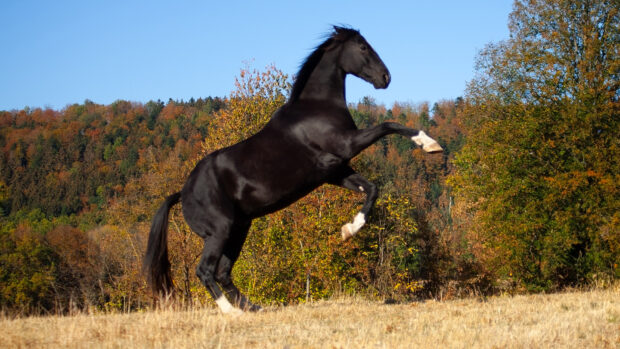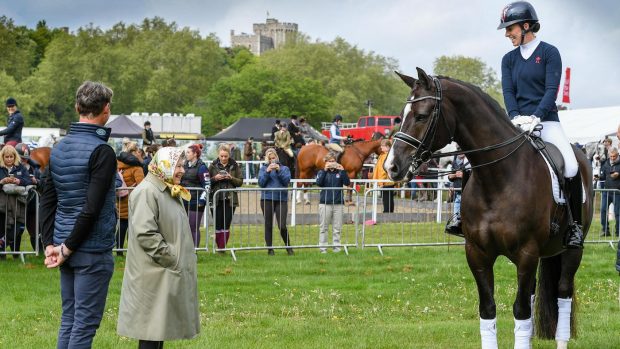THE “stigma” around wearing body protection in showjumping shows signs of decreasing – but more people need to follow suit, an A&E doctor believes.
A number of top riders have been seen wearing air jackets this summer, including at the Royal International Horse Show (RIHS) and the World Showjumping Championships.
But doctor Kate Ward, who has jumped up to 1.40m level, told H&H that in her day job, in the trauma unit of a Kent hospital, she sees people hurt in horse-related incidents every day. And although, she said, all those injured in falls had been wearing safety helmets, “the thing that astounds me is that only one patient I’ve seen in the last two years was wearing any kind of body protector”.
“I am not sure if this is coincidence or maybe the people wearing body protectors don’t come to A&E as much,” she said, adding that the one rider who was wearing one was unharmed, although she was in her seventies.
Kate herself started wearing a body protector first, after “a couple of near misses; falls where I couldn’t believe I wasn’t hurt”, then started looking into air jackets.
“I thought if they’re good enough for people coming off motorbikes, they’re probably quite a good idea if you fall off a horse,” she said, adding that the vests are far less bulky than early versions, to the point people now say they cannot see she is wearing hers.
Kate added that the turning point was when a horse’s bit snapped at home and he “bolted towards the concrete” from her unfenced arena. The horse turned left instead of right and she baled out onto the soft surface, but “after that thought ‘I’m going shopping.’”
She now does not like riding without it, but feels the stigma about body protection is still there in jumping.
“Why is there still this stigma regarding safety in this country?” she said. “Do people deem it demeaning to wear more protection? Are we stuck in the dark ages regarding tradition? There may be no clinical trial data that I know of regarding air jackets, but the logic speaks for itself. People need to take safety seriously. My conclusions are all observational, I just feel passionately about safety in equine sports, and if you saw the injuries I am faced with on a weekly basis, you would understand why. It can do no harm, only good, and anything that reduces the risk of serious injury should be considered essential.
“You are never too good to take safety seriously.”
Kate hopes to conduct an audit at work, to try to find some statistics and trends in riding falls.
One of the riders wearing an air vest at the RIHS was US-based Irishman Andrew Bourns, who told H&H that there is less stigma around wearing them in the US.
“A good friend of mine, [fellow Irish showjumper] Kevin Babington, broke his neck and was paralysed in a fall,” Andrew said. “After that happened, my mum insisted I started wearing one and Freejump [which makes his air vest] gave me full sponsorship. It gives you an enormous amount of protection.”
Andrew said he “very strongly” promotes the wearing of the vests. He uses his whenever he is jumping, including at home.
“All my clients wear them and anyone I’m close to,” he said. “My mum broke her neck in a horse accident and was in a wheelchair for eight years before she died, so it’s a very close-to- home subject for me. I’m very thankful for Freejump’s support and it’s important to draw attention to it. If it saves one life, or someone being badly injured, it’s totally worth it.”
Jodie Hall McAteer, who is also supported by Freejump and was wearing one of the company’s vets at Hickstead, told H&H: “It’s a dangerous sport and it’s easy to forget the risk involved every time you canter into the ring, so to have that extra level of protection and security is definitely worthwhile. I wasn’t sure at first, I was a bit sceptical, but you can’t really feel it when you’re wearing it. It’s so comfortable and light.
“You don’t see it so often, especially competing at the higher levels, but in January, I had a bad fall and wasn’t wearing one. I really hurt my neck and I thought, if I’d had something, had this [perhaps I wouldn’t have been injured]; I’d be silly not to.”
Zara Dickson, equine safety specialist for manufacturer Helite, told H&H there has been an increase in sales of vets to showjumpers this year.
She agrees there has been a stigma, also in the dressage and showjumping phases of eventing.
“It seems to be, ‘You need protection across country and nothing else,’ but there have been studies showing you’re more likely to have an accident schooling or hacking, and a lot of showjumpers have been buying them for schooling young horses at home,” she said. “We’ve seen a sharp increase.”
Ms Dickson added that as a company, Helite does not want people to feel they have been “sold a product”, but instead explains why they need the protection and how they will benefit.
“We’ve got testimonials from people saying the [jackets] have saved their lives,” she said. “I had one mother who’d bought one for her child and the first time out, she fell off showjumping. She messaged to say, ‘Thank you so much.’ It’s difficult trying to get the safety message across without sounding like you’re trying to sell to them, but people are choosing them now in showjumping, from Pony Club to top riders, which is nice to see.”
You might also like to read:

Subscribe to Horse & Hound magazine today – and enjoy unlimited website access all year round

‘It could save my life but I won’t wear it’: rider speaks out on body protector stigma
“I was very lucky; I was on a ward with people who weren’t so lucky and that’s why I’m passionate

‘If it saves one life, it’s worth it’: top showjumpers lead the way with body protection
Horse & Hound magazine, out every Thursday, is packed with all the latest news and reports, as well as interviews, specials, nostalgia, vet and training advice. Find how you can enjoy the magazine delivered to your door every week, plus options to upgrade to access our H&H Plus online service which brings you breaking news as it happens as well as other benefits.




